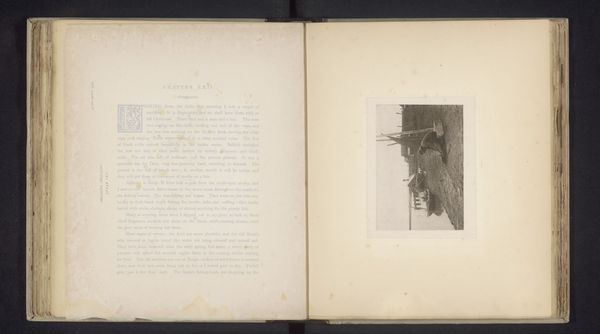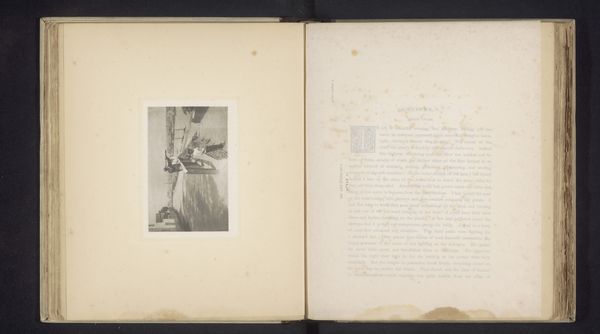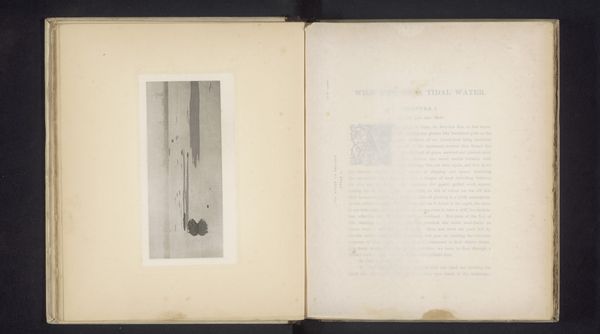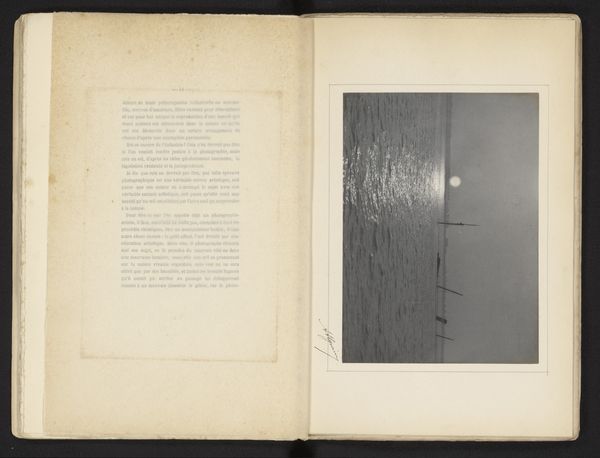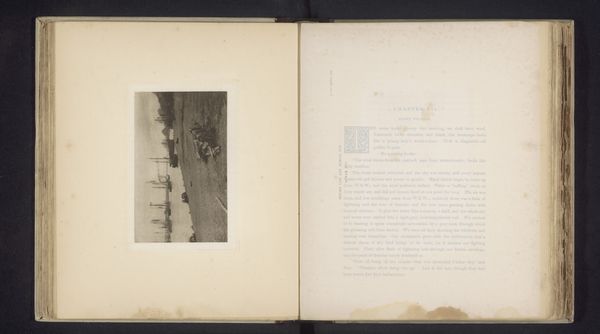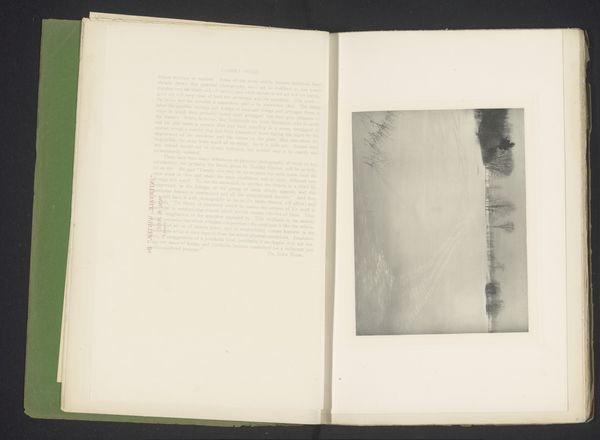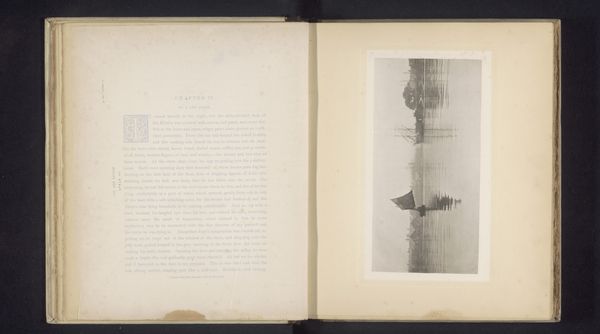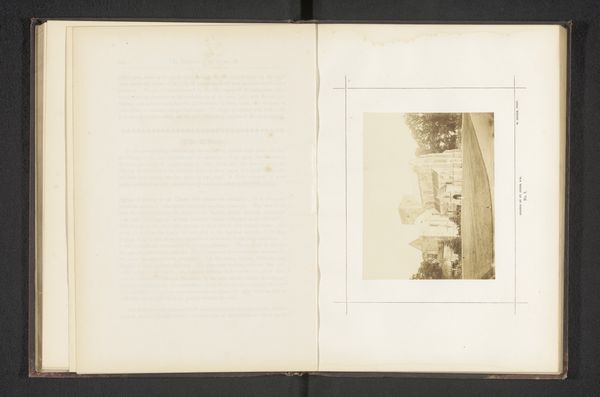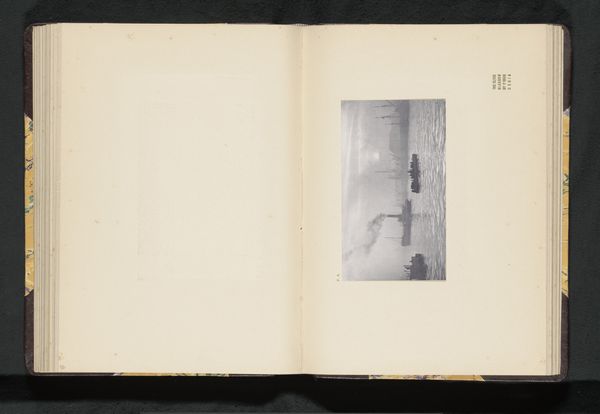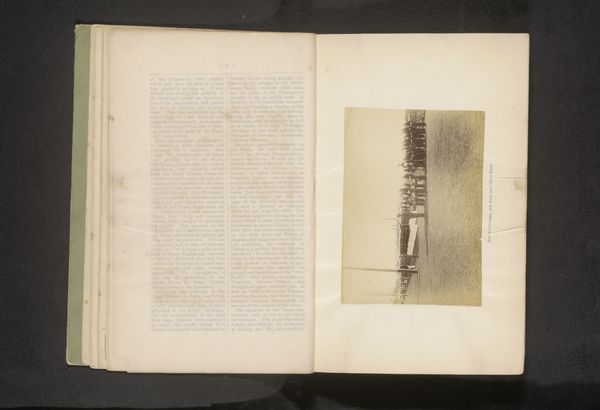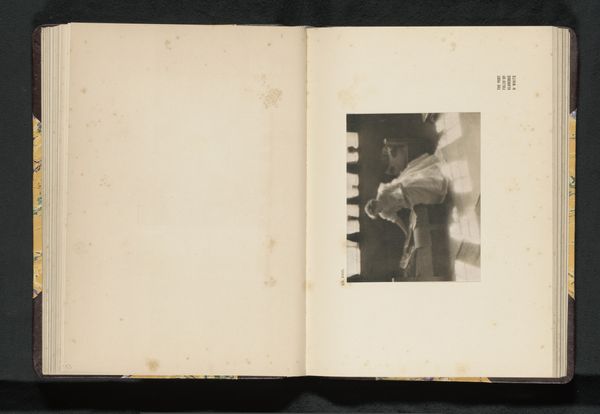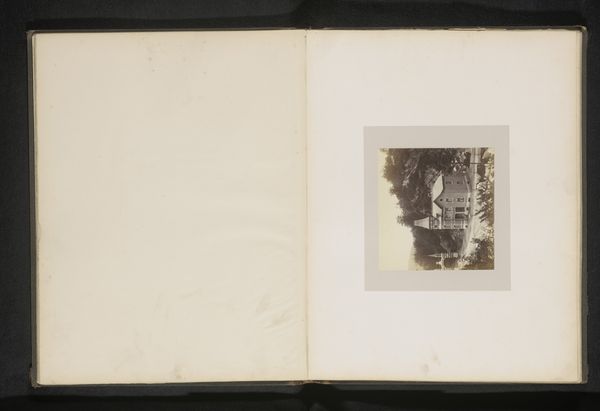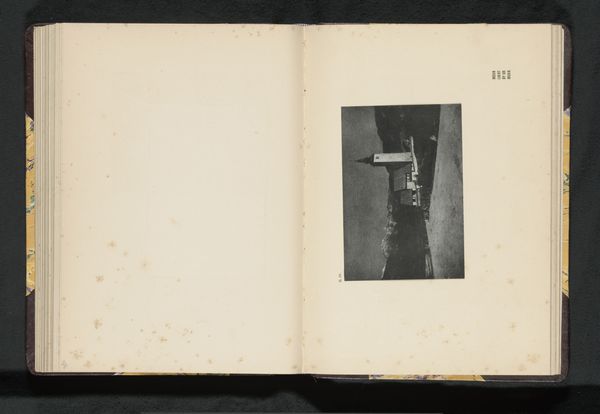
Gezicht op Great Yarmouth, met op de voorgrond de Breydon bij eb before 1890
0:00
0:00
print, textile, paper, photography, gelatin-silver-print, albumen-print
#
still-life-photography
# print
#
book
#
textile
#
paper
#
photography
#
gelatin-silver-print
#
albumen-print
#
monochrome
Dimensions: height 114 mm, width 188 mm
Copyright: Rijks Museum: Open Domain
Editor: So this is "Gezicht op Great Yarmouth, met op de voorgrond de Breydon bij eb" – roughly translated, "View of Great Yarmouth, with the Breydon at low tide in the foreground". It's by Peter Henry Emerson, dating from before 1890. What strikes me most is the contrast between the clarity of the photograph itself and its presentation within this older, slightly worn book. It's such a fascinating juxtaposition. What do you make of this piece? Curator: Indeed. The book format frames the photograph as an artifact of knowledge and documentation. Emerson was very intentional about presenting his photographs within specific contexts, often in limited-edition books. How do you think the inclusion within a bound volume changes our reception of the image, as opposed to seeing it as a stand-alone photographic print displayed on a gallery wall? Editor: I hadn't considered that! I suppose seeing it in a book feels almost... archival? Like a preserved historical document, giving it a layer of academic credibility almost, doesn’t it? What kind of audience do you think Emerson was trying to reach? Curator: That’s astute. Emerson aimed for a discerning audience, one attuned to aesthetic debates regarding photography’s status as art. By presenting his images within a literary context, Emerson strategically positioned photography alongside more established artistic forms. He fought for photography’s acceptance into the mainstream artistic conversation of the time, especially within the Royal Photographic Society where such debates played out publicly. So, what do we learn by considering those ambitions of his in our appreciation of this piece? Editor: I guess seeing it that way reframes my perspective. It isn't just an image, it's a statement— a deliberate insertion of photography into high art and intellectual circles! It enriches my viewing knowing the broader implications of its presentation in a book like this. Curator: Precisely! And, that kind of deliberate social intervention gives the photograph – and indeed the photographer - a very powerful public role. A role that reverberates to this day, as artists use the tools at their disposal to comment and engage with the world around them.
Comments
No comments
Be the first to comment and join the conversation on the ultimate creative platform.
